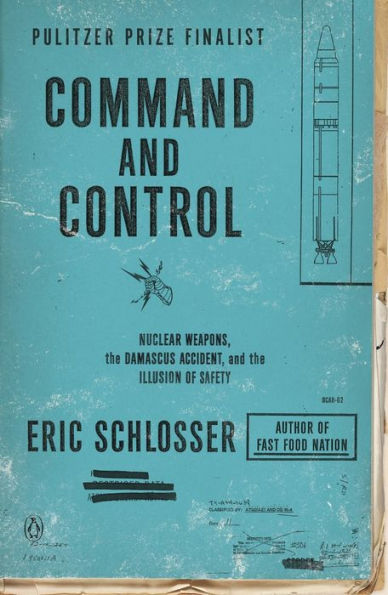From the Publisher
Los Angeles Times
“Deeply reported, deeply frightening… a techno-thriller of the first order.”
The New Yorker
“An excellent journalistic investigation of the efforts made since the first atomic bomb was exploded, outside Alamogordo, New Mexico, on July 16, 1945, to put some kind of harness on nuclear weaponry. By a miracle of information management, Schlosser has synthesized a huge archive of material, including government reports, scientific papers, and a substantial historical and polemical literature on nukes, and transformed it into a crisp narrative covering more than fifty years of scientific and political change. And he has interwoven that narrative with a hair-raising, minute-by-minute account of an accident at a Titan II missile silo in Arkansas, in 1980, which he renders in the manner of a techno-thriller…Command and Control is how nonfiction should be written.” (Louis Menand)
Time magazine
“A devastatingly lucid and detailed new history of nuclear weapons in the U.S. … fascinating.” (Lev Grossman)
Financial Times
“Command and Control ranks among the most nightmarish books written in recent years; and in that crowded company it bids fair to stand at the summit. It is the more horrific for being so incontrovertibly right and so damnably readable. Page after relentless page, it drives the vision of a world trembling on the edge of a fatal precipice deep into your reluctant mind... a work with the multilayered density of an ambitiously conceived novel… Schlosser has done what journalism does at its best when at full stretch: he has spent time – years – researching, interviewing, understanding and reflecting to give us a piece of work of the deepest import.”
The Guardian
“The strength of Schlosser's writing derives from his ability to carry a wealth of startling detail (did you know that security at Titan II missile bases was so lapse you could break into one with just a credit card?) on a confident narrative path.”
San Francisco Chronicle
"Perilous and gripping… Schlosser skillfully weaves together an engrossing account of both the science and the politics of nuclear weapons safety… The story of the missile silo accident unfolds with the pacing, thrill and techno details of an episode of 24."
New York Times Book Review:
“Disquieting but riveting… fascinating… Schlosser’s readers (and he deserves a great many) will be struck by how frequently the people he cites attribute the absence of accidental explosions and nuclear war to divine intervention or sheer luck rather than to human wisdom and skill. Whatever was responsible, we will clearly need many more of it in the years to come.”
Mother Jones:
“Easily the most unsettling work of nonfiction I've ever read, Schlosser's six-year investigation of America's ‘broken arrows’ (nuclear weapons mishaps) is by and large historical—this stuff is top secret, after all—but the book is beyond relevant. It's critical reading in a nation with thousands of nukes still on hair-trigger alert... Command and Control reads like a character-driven thriller as Schlosser draws on his deep reporting, extensive interviews, and documents obtained via the Freedom of Information Act to demonstrate how human error, computer glitches, dilution of authority, poor communications, occasional incompetence, and the routine hoarding of crucial information have nearly brought about our worst nightmare on numerous occasions.”
Vanity Fair:
“Eric Schlosser detonates a truth bomb in Command and Control, a powerful expose about America’s nuclear weapons.”
Publishers Weekly (starred):
"Nail-biting... thrilling... Mixing expert commentary with hair-raising details of a variety of mishaps, [Eric Schlosser] makes the convincing case that our best control systems are no match for human error, bad luck, and ever-increasing technological complexity."
Kirkus Reviews (starred):
"Vivid and unsettling... An exhaustive, unnerving examination of the illusory safety of atomic arms."
Lee H. Hamilton, former U.S. Representative; Co-Chair, Blue Ribbon Commission on America’s Nuclear Future; Director, the Center on Congress at Indiana University:
“The lesson of this powerful and disturbing book is that the world’s nuclear arsenals are not as safe as they should be. We should take no comfort in our skill and good fortune in preventing a nuclear catastrophe, but urgently extend our maximum effort to assure that a nuclear weapon does not go off by accident, mistake, or miscalculation.”




